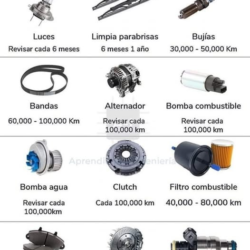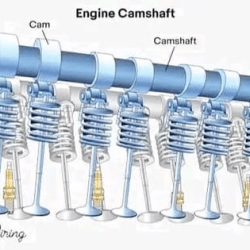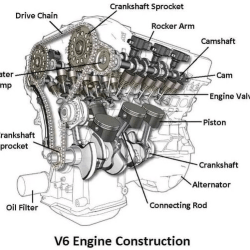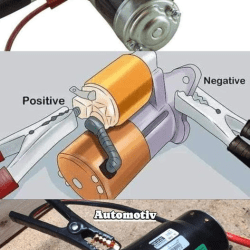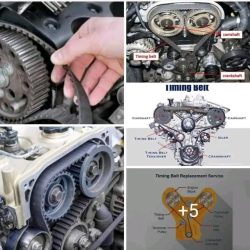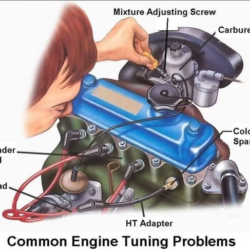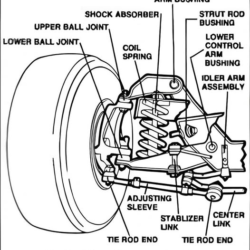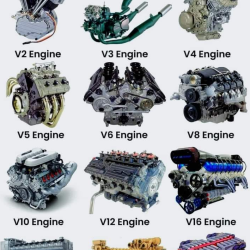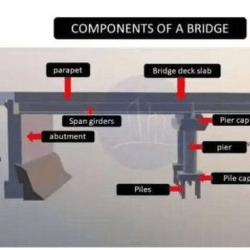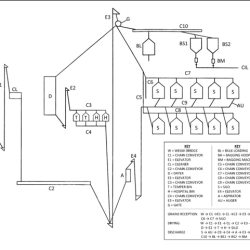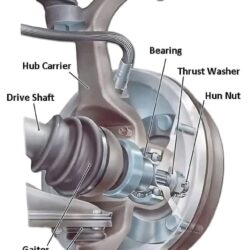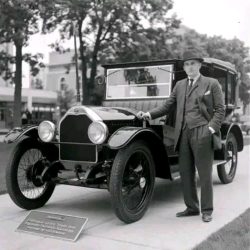Your vehicle is a marvel of engineering, with numerous systems working seamlessly to ensure efficient and safe operation. At the heart of these systems are vital fluids that enable smooth functioning, cooling, lubrication, and even communication between components. Neglecting these fluids can lead to costly repairs and compromise safety. Below is an in-depth guide to the essential fluids every vehicle owner should know about, their purposes, and maintenance tips.
1. Engine Oil
Purpose:
Engine oil, or motor oil, lubricates the engine’s moving parts, reducing friction and preventing overheating. It also protects components from rust and removes contaminants.
Types:
- Conventional Oil: For older vehicles or low-mileage cars.
- Synthetic Oil: Offers better performance and longer intervals between changes.
- Blend: Combines synthetic and conventional oils for a balanced option.
Maintenance Tips:
- Check oil levels monthly using the dipstick.
- Replace the oil and oil filter every 5,000–7,000 miles, or as specified in the owner’s manual.
- Look for signs of contamination or a burnt smell, which could indicate overheating.
2. Engine Coolant (Antifreeze)
Purpose:
Coolant maintains the engine’s temperature, preventing overheating in summer and freezing in winter.
Types:
- Ethylene Glycol-Based: Commonly used in modern vehicles.
- Propylene Glycol-Based: Eco-friendlier alternative.
How It Works:
Coolant circulates through the engine and radiator, absorbing heat and releasing it via the radiator fins.
Maintenance Tips:
- Check coolant levels in the reservoir regularly.
- Flush and replace coolant every 30,000–50,000 miles or per the manufacturer’s recommendation.
- Always use the type specified in the owner’s manual to avoid corrosion or inefficiency.
3. Differential Oil
Purpose:
Also known as gear oil, differential oil lubricates the gears in the differential, which allows your wheels to turn at different speeds, especially during cornering.
Types:
- Vary by viscosity, such as SAE 75W-90 or 80W-140, depending on your vehicle.
Maintenance Tips:
- Inspect for leaks, especially if you notice a grinding noise during turns.
- Replace differential oil every 30,000–60,000 miles for optimal performance.
4. Power Steering Fluid
Purpose:
Power steering fluid ensures the smooth operation of the steering mechanism, making it easier to turn the wheel.
Signs of Trouble:
- Difficulty steering or stiff wheel movement.
- Whining noise when turning.
Maintenance Tips:
- Check fluid levels monthly using the dipstick or reservoir markings.
- Replace fluid every 50,000 miles or if it appears dark or contaminated.
- Look for leaks around the hoses or power steering pump.
5. Brake Fluid
Purpose:
Brake fluid transfers force from the brake pedal to the brake components, enabling you to stop the vehicle.
Types:
- DOT 3 and DOT 4: Glycol-based and common in most vehicles.
- DOT 5: Silicone-based, primarily for specialized or classic cars.
Maintenance Tips:
- Inspect fluid levels and color regularly. Dark or murky fluid indicates it’s time for a change.
- Replace brake fluid every two years to prevent moisture contamination, which can reduce braking efficiency.
- Check for leaks if you notice spongy brakes or reduced braking power.
6. Transmission Fluid
Purpose:
Transmission fluid acts as a lubricant and hydraulic fluid in automatic transmissions, ensuring smooth gear shifts and cooling the transmission components.
Types:
- Automatic Transmission Fluid (ATF): Used in most vehicles with automatic transmissions.
- Manual Transmission Fluid: Thicker and often specified for manual transmissions.
Maintenance Tips:
- Check fluid levels with the dipstick (if accessible) when the engine is running and warm.
- Replace fluid every 30,000–60,000 miles, or as directed in your manual.
- Look for leaks if you notice delayed gear shifts or a burning smell.
Additional Fluids to Monitor
Windshield Washer Fluid
- Purpose: Cleans your windshield for better visibility.
- Tip: Top off regularly with a fluid that includes antifreeze properties in winter.
Battery Fluid (For non-sealed batteries)
- Purpose: Maintains the electrolyte levels for proper battery function.
- Tip: Check levels and add distilled water as needed.
Air Conditioning Refrigerant
- Purpose: Cools your car’s interior by absorbing heat and releasing it outside.
- Tip: Recharge the refrigerant if cooling performance declines.

1. How often should I check my car’s fluids?
It’s a good habit to check all fluid levels once a month to catch any issues early.
2. What happens if I use the wrong fluid?
Using the incorrect fluid can lead to damage or inefficiency. Always refer to your owner’s manual for guidance.
3. Can I mix different types of coolant or brake fluid?
No, mixing fluids can cause chemical reactions that degrade performance. Use only the type specified for your vehicle.
4. How do I know if my vehicle is leaking fluid?
Look for puddles under your car. The color and consistency of the fluid can help identify the source (e.g., red for transmission fluid, green for coolant).
5. What are the signs of low oil levels?
Warning lights, unusual engine noise, or a burning smell are common signs.
6. Why does brake fluid absorb moisture?
Brake fluid is hygroscopic, meaning it absorbs water from the air. Over time, this lowers its boiling point and efficiency.
Keeping these fluids in check ensures your vehicle operates efficiently and safely. Proper maintenance not only extends the life of your car but also enhances your driving experience.
